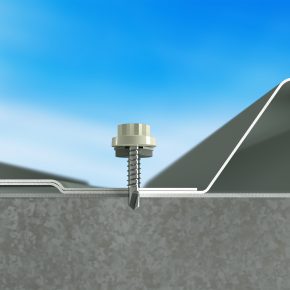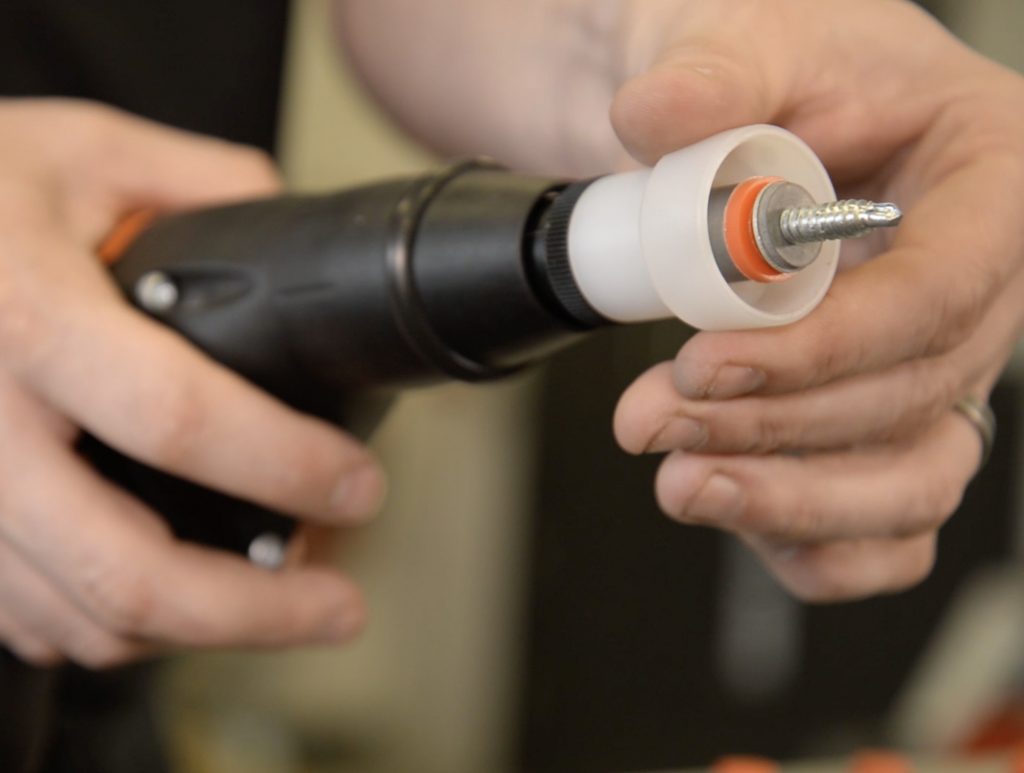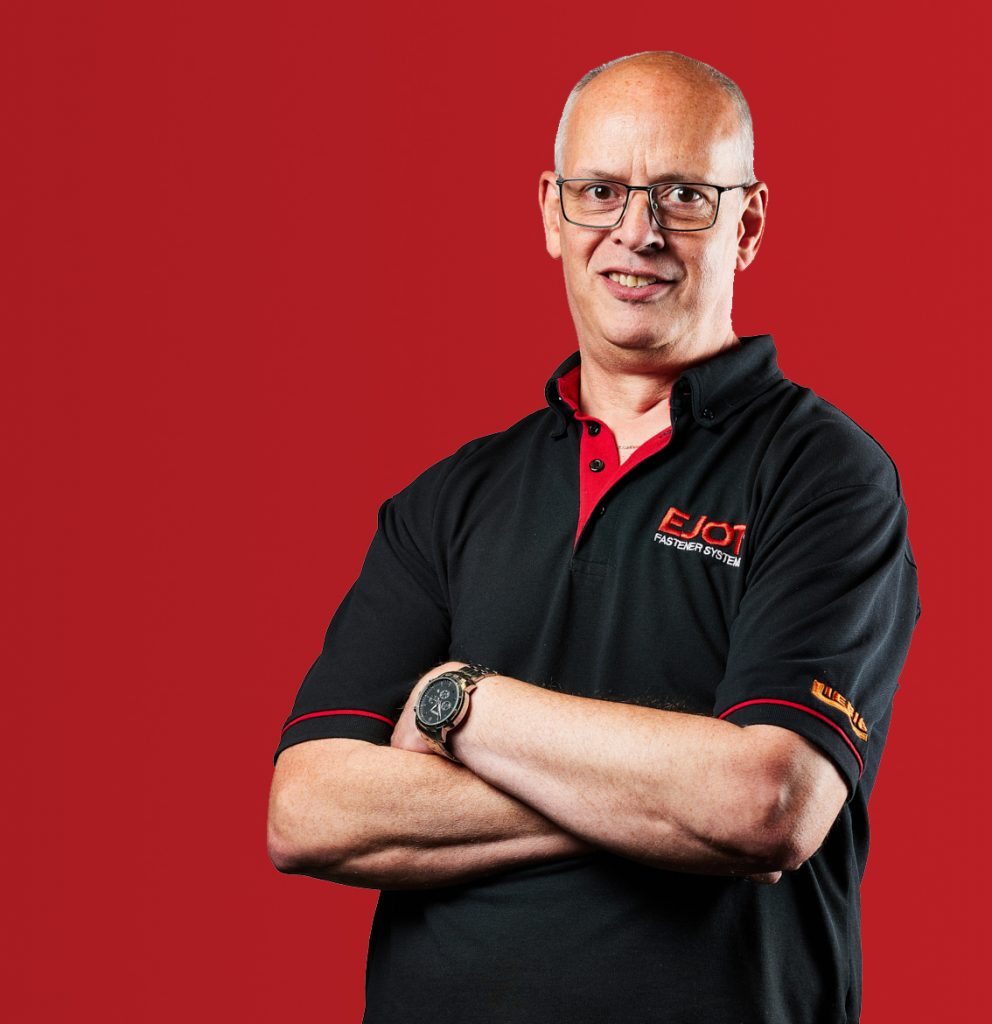
EJOT publishes best practice guidance for self-drilling fasteners
With correct fastener specification only part of what is required to deliver a building envelope that is highly secure, watertight, and thermally insulated, construction fastening systems specialist EJOT is helping installers to deliver a quality installation every time.
It has published important best practice guidance which will help installers achieve quality and longevity in the envelope through the correct use of self-drilling fasteners for roofing and cladding.
EJOT highlights why the installation method is of such significance, and the attention to detail that is needed, because the whole project team has a collective responsibility as the NFRC Blue Book states. This means there is a responsibility between the designer/specifier, the sheeting contractor and the on-site operative to get it right.
Hence, the adoption of best practice for using self-drilling fasteners, as recommended by EJOT, is extremely important – as is the need to establish a frequency and process for checking the quality of the seal between the washer and component being installed, at individual fixing points.

EJOT’s range of self-drilling fasteners is as broad as the materials they are fixing; the ultimate substrate material – and the environmental conditions set by the application itself. These highly engineered technical components undergo rigorous testing prior to their launch, with a drill point, thread, head and washer design that demands the correct driver setting to achieve a high quality attachment.
Given their manufacture to stringent quality standards, when issues are raised on-site relating to self-drilling screws, EJOT responds with an inspection. Providing the fastener specification was right in the first place, in the vast majority of inspections EJOT can trace the fault back to the choice of screw gun and a potential lack of awareness that the gun must be set correctly.
Using the correct driver for self-drilling fasteners
The choice of driver and applied technique is the root-cause of many quality issues according to EJOT. For example, a drill driver will only give 800 revolutions per minute – too low to properly drill the hole. At the other end of the scale is a dry lining gun, which can turn at over 4,000 revs and will burn out the fastener’s drill point. And to be avoided at all costs, are impact drivers – the rotational impact of these may be great for high torque installation of anchors, but completely wrong for self-drilling fasteners.
EJOT recommend a screw gun that can be carefully set and controlled – i.e. a driver with a clutch mechanism – in conjunction with a nosepiece to properly set the depth. This nosepiece helps to get the correct thread engagement relative to the components being joined – and a washer engagement to create a consistently correct seal.
The ideal driver operating speed for self-drilling fasteners is between 1500 and 2000 rpm – and there are plenty of screw guns that fit these criteria, including the cordless FEIN AS CS 6.3, which has performed well in EJOT tests in the UK and Germany. As a result, EJOT’s UK R&D team developed a bespoke nosepiece option which gives the installer a helping hand in achieving a consistent result.
Don’t forget to test the quality of the seal
Having ascertained the correct screw gun setting, however, it is easy to overlook the value of regular seal testing in order to be sure the optimum settings are being maintained. How this is done, and at what frequency has to be judged on a project-by-project basis because, with so many variables affecting the quality of individual installations, it is difficult for the industry’s leading trade bodies to arrive a ‘one size fits all’ recommendation for seal testing.
With that in mind, EJOT is now producing a new ‘how to’ video, and extending its Best Practice literature with the objective of providing a framework of recommendations that underline the value of regular and correct seal testing. The video will cover all of the seal testing operating basics such as marrying the correct suction cup to the right fastener and washer, through to what the correct gauge reading results should be.
EJOT will also offer some sound troubleshooting advice by highlighting some of the typical ‘bad practice’ workarounds known to be used on site when a fastener seal is not as it should be.
Brian Mack, Technical Business Development Manager at EJOT UK (pictured below), comments: “As a responsible OEM, we want to support installers as much as we can, particularly in areas like seal testing where the requirements will vary by project.

“That’s why our latest guidance for self-drilling fasteners will enable installers to develop an effective process for installation and get into a seal testing regime – best practice that will ultimately deliver what the ‘right result’ should be and support the longevity of project investment.”
Contact EJOT
To find out more about installation and seal testing best practice for self-drilling fasteners, contact EJOT UK on 01977 687040 or email [email protected].
Find out more at www.ejot.co.uk.
To read about a new trio of flat roofing time and money-savers from EJOT, click here.
EJOT UK
Hurricane Close
Sherburn Enterprise Park
Sherburn-in-Elmet
Leeds
LS25 6PB
UK
Visit Supplier's page
Latest news

26th July 2024
Enfield Speciality Doors completes world-class project for Atlas Copco HQ
A rundown office and warehouse building completely transformed into a modern headquarters for Atlas Copco has been fitted with more than 120 internal fire doors from Enfield Speciality Doors.
Posted in Access Control & Door Entry Systems, Articles, Building Industry News, Building Products & Structures, Building Systems, Case Studies, Doors, Interior Design & Construction, Interiors, Posts, Restoration & Refurbishment, Retrofit & Renovation, Security and Fire Protection, Sustainability & Energy Efficiency, Timber Buildings and Timber Products, Wooden products
26th July 2024
Abloy UK launches new white paper
Abloy UK, a leading provider of security and access control solutions, has launched a new white paper.
Posted in Access Control & Door Entry Systems, Architectural Ironmongery, Articles, Building Industry News, Building Products & Structures, Building Services, Doors, Facility Management & Building Services, Health & Safety, Information Technology, Innovations & New Products, Publications, Research & Materials Testing, Security and Fire Protection
26th July 2024
MCRMA Member Profile: David Roy, Director of Roofconsult
David Roy of MCRMA member company Roofconsult has more than 50 years’ experience to draw upon working in the building envelope sector and a unique perspective on how it has changed in that time.
Posted in Articles, BIM, Infrastructure & CAD Software, Building Associations & Institutes, Building Industry News, Building Products & Structures, Building Services, Building Systems, Cladding, Information Technology, Restoration & Refurbishment, Retrofit & Renovation, Roofs, Walls
26th July 2024
Strand: Enhancing Door Functionality and Safety
Craig Fox, Sales Director for Strand Hardware, outlines how door industry professionals might apply door limiting stays…
Posted in Architectural Ironmongery, Articles, Building Industry News, Building Products & Structures, Building Services, Doors, Facility Management & Building Services, Health & Safety, Restoration & Refurbishment, Retrofit & Renovation
 Sign up:
Sign up: